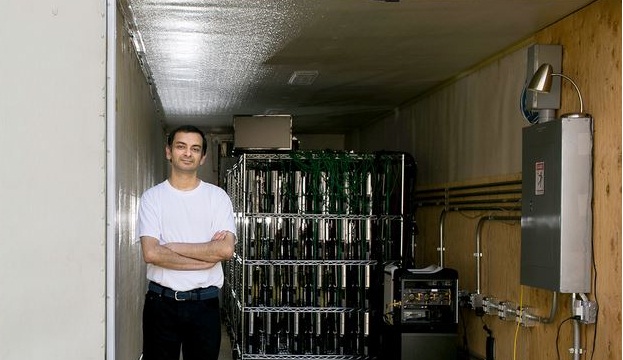
Dr. Gaurav Khanna, a black hole physicist at the University of Massachusetts Dartmouth, needed a supercomputer to study gravitational waves and so instead of waiting for enough funding to come by, he decided to make his own budget supercomputer out of old PlayStation 3 consoles (PS3) as they were relatively cheap ($250) and allowed the user to install any operating system.
Since Khanna’s research focuses on gravitational waves, which are ripples in the fabric of space-time produced by moving masses like stars or black holes, usually when two or more compact masses interact in a violent manner, such as colliding together and because black holes cannot be observed through telescopes, he uses supercomputers to create simulations of these collisions. But such supercomputers are costly.
“Science has become expensive. There’s simply not that much money going around, either at the university or the federal level. Supercomputing allows scientists to make up for the resources they don’t have,” he told the New York Times. “Gaming had grown into a huge market. There’s a huge push for performance, meaning you can buy low-cost, high-performance hardware very easily. I could go out and buy 100 PlayStation 3 consoles at my neighborhood Best Buy, if I wanted.”
In 2007, Khanna contacted Sony for help who donated four consoles, his university funded eight consoles, while Khanna bought four consoles from his own money. All 16 were then loaded up with Linux and linked over the Internet – the result was a processor that could speed up calculations 10 times better than single desktop computers. He published the results of the make-shift supercomputer in the journal Parallel and Distributed Computing Systems in 2009. This marked the first time a PS3 cluster was used to publish scientific results.
Lior Burko, an associate professor of physics at Georgia Gwinnett College and a past collaborator with Dr. Khanna, remarked, “Dr. Khanna was able to combine his two fields of expertise, namely general relativity and computer science, to invent something new that allowed for not just a neat new machine, but also scientific progress that otherwise might have taken many more years to achieve.”
In 2010, Khanna and his team made a PS3 supercomputer – the Condor Cluster – for the US Air Force Research Laboratory, using 1,716 consoles to conduct radar image processing for urban surveillance. It was the 33rd largest supercomputer in the world and was capable of analyzing high definition satellite imagery. The US Department of Defense later donated 176 PS3 consoles to him.
Using those 176 consoles, he build a supercomputer with the same processing power as 3,000 laptops, and stored in an empty refrigerated milk shipping container. It cost only $75,000 to make — about a tenth the cost of a comparable supercomputer made using traditional parts.
He is now planning to build another supercomputer using PC graphic cards, which would be as powerful as a computer built by 20 PS3s, since the consoles cannot handle large-scale calculations. “The next supercomputer we’re going to build will probably be made entirely of these cards. It won’t work for everything, but it will certainly cover a large set of scientific and engineering applications, especially if we keep improving on it,” he explained.
Get Your Anonymous T-Shirt / Sweatshirt / Hoodie / Tanktop, Smartphone or Tablet Cover or Mug In Our Spreadshirt Shop! Click Here
This Article (To Simulate Black Hole Collisions Astrophysicist Makes Powerful Supercomputer Using Old PS3s ) is free and open source. You have permission to republish this article under a Creative Commons license with attribution to the author and AnonHQ.com.





Well done recycling old for new use.